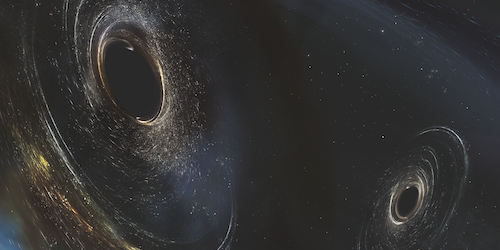LIGO Picks Up on the Third Ring
Once is chance, twice is coincidence, thrice is a pattern. After detecting two gravitational-wave signals in September and December of 2015, the LIGO (Laser Interferometer Gravitational-Wave Observatory) Scientific and Virgo Collaborations are now reporting their third catch. On 4 January 2017, the LIGO instruments recorded a gravitational-wave “chirp” from the merger of two black holes whose combined mass is 50 times that of the Sun.
For much of the past year, the LIGO detectors were offline to allow an upgrade. A second observing run began on 30 November 2016, and the third signal showed up just a month later. Detailed analysis of the event—named GW170104—suggests a merger of two black holes having 31 and 19 solar masses. The researchers have estimated the distance to this cataclysm to be 3 billion light years, which is roughly twice as far as the two previously observed events.
The two previous gravitational-wave detections by LIGO were also black hole mergers: the first had a total mass of 65 solar masses (see 11 February 2016 Viewpoint), while the second had 22 solar masses. These detections, along with GW170104, provide an estimate of the merger rate of stellar-mass binary black holes, and the rate appears to be larger than some models predict. The observations also give insight into the typical properties of binary black holes, including their spins. Spins are difficult to measure, but results from GW170104 suggest that the spins may not be aligned with the pair’s mutual orbit, a finding that could favor some black hole binary formation mechanisms over others.
This research is published in Physical Review Letters.
–Michael Schirber
Michael Schirber is a Corresponding Editor for Physics based in Lyon, France.





